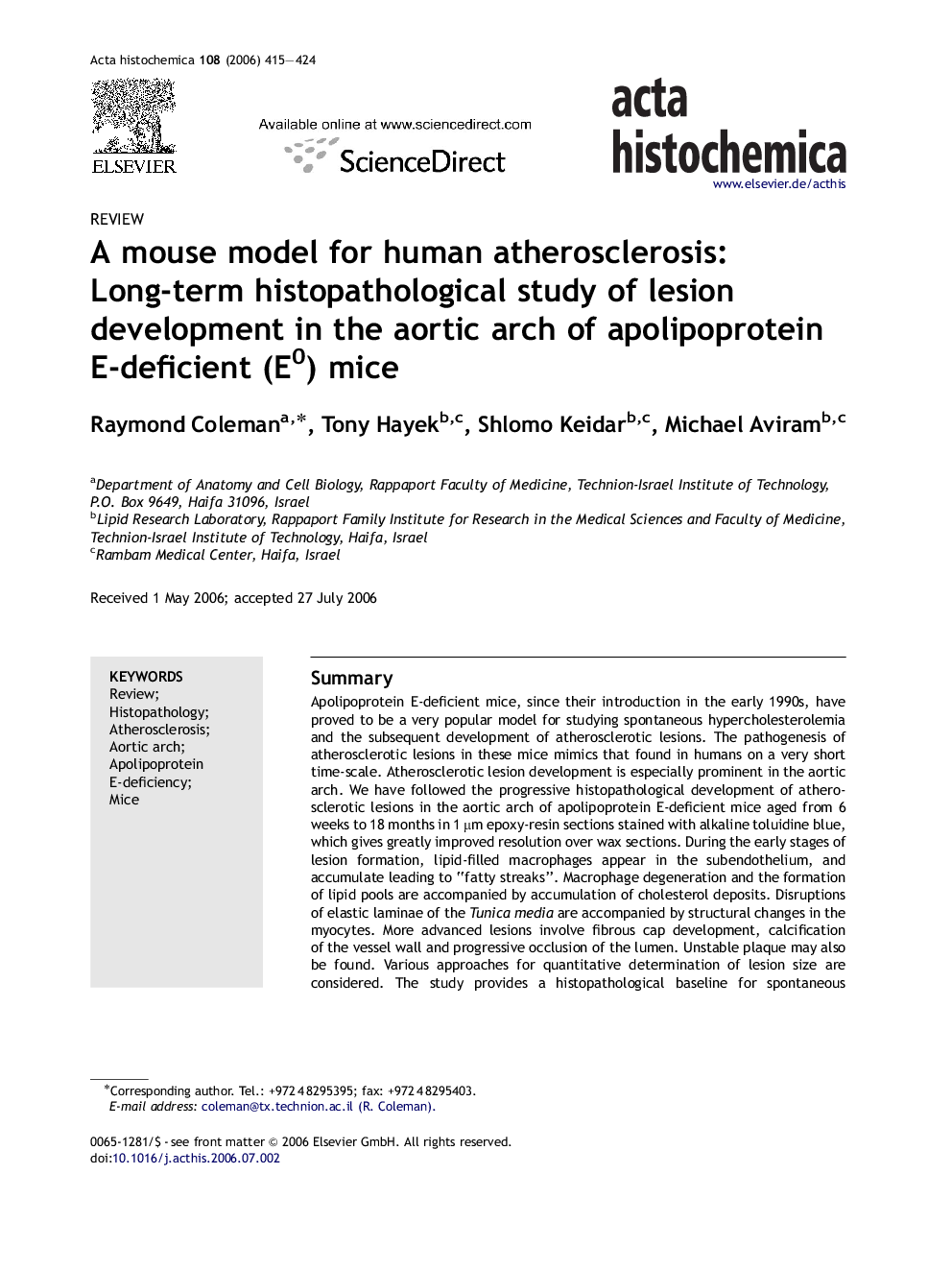| Article ID | Journal | Published Year | Pages | File Type |
|---|---|---|---|---|
| 1924323 | Acta Histochemica | 2006 | 10 Pages |
SummaryApolipoprotein E-deficient mice, since their introduction in the early 1990s, have proved to be a very popular model for studying spontaneous hypercholesterolemia and the subsequent development of atherosclerotic lesions. The pathogenesis of atherosclerotic lesions in these mice mimics that found in humans on a very short time-scale. Atherosclerotic lesion development is especially prominent in the aortic arch. We have followed the progressive histopathological development of atherosclerotic lesions in the aortic arch of apolipoprotein E-deficient mice aged from 6 weeks to 18 months in 1 μm epoxy-resin sections stained with alkaline toluidine blue, which gives greatly improved resolution over wax sections. During the early stages of lesion formation, lipid-filled macrophages appear in the subendothelium, and accumulate leading to “fatty streaks”. Macrophage degeneration and the formation of lipid pools are accompanied by accumulation of cholesterol deposits. Disruptions of elastic laminae of the Tunica media are accompanied by structural changes in the myocytes. More advanced lesions involve fibrous cap development, calcification of the vessel wall and progressive occlusion of the lumen. Unstable plaque may also be found. Various approaches for quantitative determination of lesion size are considered. The study provides a histopathological baseline for spontaneous atherosclerosis associated with hypercholesterolemia, which can be used in connection with experimental interventional studies on the efficacy of drugs or foodstuffs in retardation of atherosclerosis.
